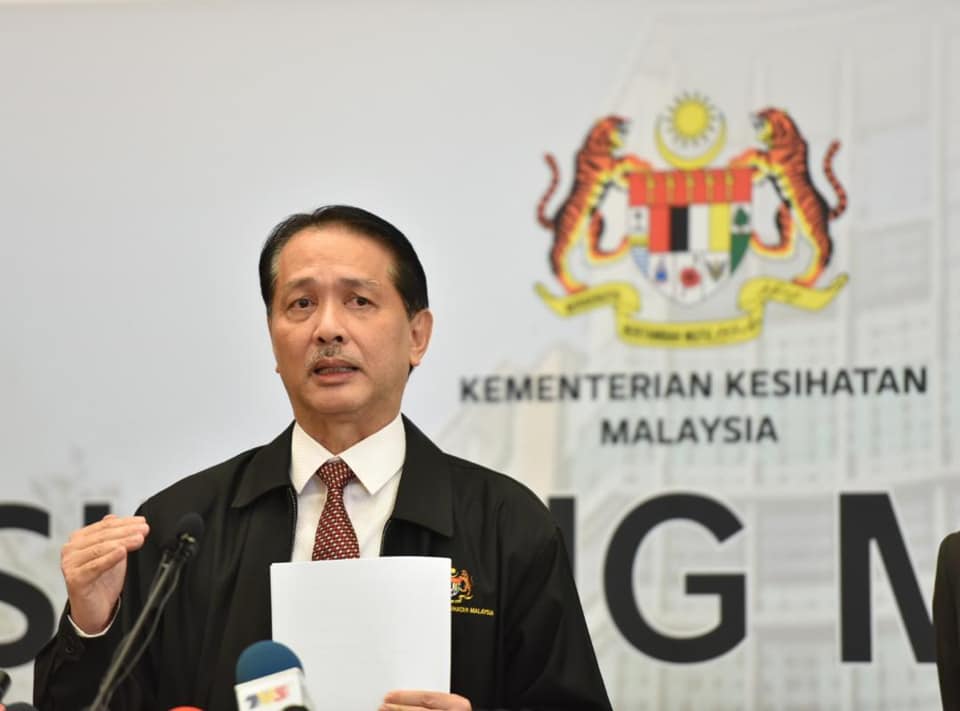KUALA LUMPUR, April 1 — Health authorities today asserted early indications that the Movement Control Order (MCO) may have been successful in containing the Covid-19 outbreak, even as experts have called for mass testing.
Health director-general Dr Noor Hisham Abdullah cited an analysis by the Malaysian Institute of Economic Research (MIER), a think tank that does research on economic, financial and business issues in Malaysia, that claimed a “flattening of the curve” by comparing the trajectory of official confirmed coronavirus cases and its own projected trajectory from March 24 to March 31.
“The average D2D day-to-day increase in cases that was projected was 12.51 per cent, while the actual reported rate of increase is 7.49 per cent with a point margin difference of 5.02 per cent (a change of 0.34 per cent from the previous day average).
“This shows that the growth of new cases for the first eight days of tracking (24.3.2020 – 31.03.2020) has shown a lower rate than that was projected. Although this is still very early in the actual vs simulation projections, it does show that there has been significant impact of the Movement Control Order (MCO) in the rate of new patients as well as flattening of the curve,” MIER said.
Dr Noor Hisham told a press conference that according to MIER’s analysis, Malaysia’s Covid-19 cases did not increase exponentially, but had flattened a little.
Malaysia has reported over 2,900 Covid-19 infections as of today, along with 45 fatalities. The median of officially confirmed cases each day from March 15 to April 1 is 141 infections.
“Looking at this graph, there are early signs that we were successful in our actions in implementing the MCO. So we hope that in Phase 2, we can enhance our strategy and activities, especially in the hotspots that have been identified,” Dr Noor Hisham said.
“If there are exponential cases in the hotspots, we’ll impose an Enhanced MCO (EMCO). Under the EMCO, we’ll screen everyone in the area, we’ll test, identify, isolate, and treat.”
Unlike the areas under EMCO — two areas in Simpang Renggam, seven villages in Hulu Langat, and a condominium in Kuala Lumpur — where all residents are tested, MOH mainly tests people displaying symptoms with overseas travel history or contact with a confirmed Covid-19 case. People who don’t show symptoms of the respiratory disease are only tested if they attended a recent tabligh event at Sri Petaling mosque that has been linked to over 1,000 coronavirus cases, or high-risk groups like Rohingya refugees, some of whom also attended the Muslim religious gathering.
When asked about Malaysians going back to their hometowns during Hari Raya, the DG said it was too early to say if the Covid-19 outbreak could be contained as best as possible.
“But, looking at the graph, there are early signs it can be contained,” he said. “We hope that in two weeks, we can flatten the projected curve some more.”
According to Dr Noor Hisham, 7,660 coronavirus patients’ test results were pending as of today, while a total of 43,462 people have been tested as of today; 2,908 tested positive and 32,894 tested negative as of April 1. This means that 2,979 tests were done today.
Based on testing data that MOH has released only from March 28 to April 1, 2,158 tests were done on March 29, 1,989 on March 30, 820 on March 31, and 2,979 on April 1. The pending test results for each day were 8,468 on March 28, 8,213 on March 29, 8,457 on March 30, 8,219 on March 31, and 7,660 on April 1.
When asked at the press conference if Covid-19 lab tests have dropped because of the pending cases, Dr Noor Hisham said Malaysia has increased the number of laboratories that can run coronavirus tests to 48.
“Now, we have the capacity to do 11,500 tests [daily], and we’ll increase it to maybe 16,500,” he said.
He added that MOH would purchase 200,000 antigen rapid test kits from South Korea if the test had high accuracy. These tests don’t have to be sent to labs, but can be done at clinics and hospitals and only require a biosafety cabinet.
The DG cited the possibility of running these antigen rapid test kits at 444 MOH clinics nationwide that can take swab samples and hastening test results.
“We hope in a day or two, we can do it,” he said.
When asked for the number of coronavirus tests done daily, Dr Noor Hisham told CodeBlue that MOH was still testing those receiving treatment in hospitals, plus two tests for Covid-19 patients before they are discharged.
He cited an NPR news report that quoted World Health Organization (WHO) Health Emergencies Programme executive director Michael Ryan as saying that in countries with extensive testing, fewer than 12 per cent of their tests are positive.
Ryan reportedly said WHO’s benchmark of a system with sufficient testing to pick up all Covid-19 cases was ten negative tests to one positive. If most Covid-19 tests turn up positive, it’s a sign that there are many more undetected cases.
“Ours testing positive Covid-19 around 7 per cent,” Dr Noor Hisham told CodeBlue.
Virologist Dr Sazaly Abu Bakar reportedly said last month that Malaysia should emulate South Korea, Japan, and Taiwan in conducting aggressive coronavirus testing in the communities by going door-to-door, instead of waiting for sick people to turn up for tests.








